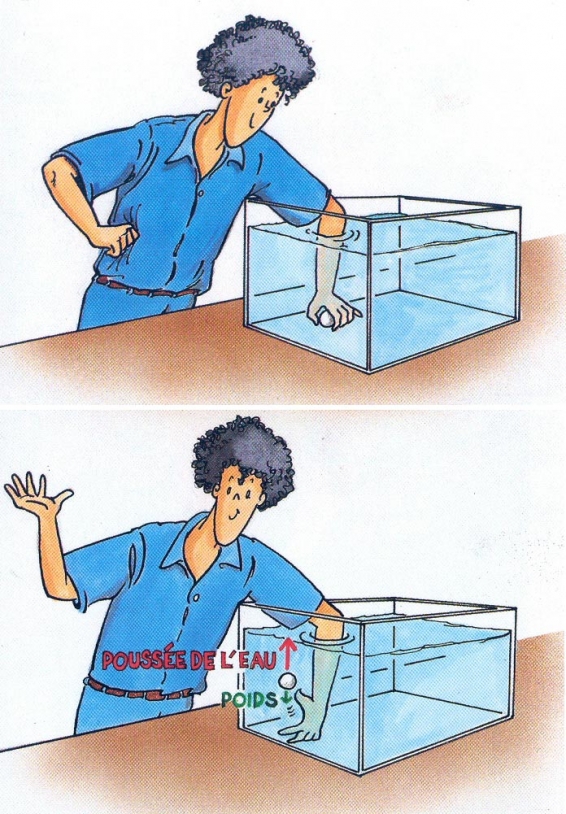June 24, 2005
How do balloons fly?
A simple experiment will help us to understand how balloons fly.

Hold a table tennis ball in your hand and plunge it under the water in an aquarium. As soon as you let go, the ball quickly rises to the surface. In the aquarium, the ball takes the place of roughly 20 cm3 of water and is subjected to water pressure all around it.
Volume of ball: 20 cm3
Weight of ball: 2 g
Weight of ball filled with water: 20 g (1 cm3 of water weighs 1 g)
Weight of ball filled with air: 0.03 g
A simple calculation shows that this results in an upward force, called buoyancy, equivalent to the weight of a ball filled with water, which would be about 20 g. The weight of the table tennis ball (2 g) takes it downwards, while buoyancy exerts a force 10 times greater in the opposite direction.
Why doesn’t the ball continue rising after it reaches the surface? Quite simply because the volume of air displaced by the ball only weighs 0.03 g. The upward force generated is therefore no longer enough to counter the downward force of the ball’s weight, which is 70 times greater. In other words, it’s all to do with density.
Why doesn’t the ball continue rising after it reaches the surface? Quite simply because the volume of air displaced by the ball only weighs 0.03 g. The upward force generated is therefore no longer enough to counter the downward force of the ball’s weight, which is 70 times greater. In other words, it’s all to do with density.

On the other hand, buoyancy does not exist in a vacuum. So, we couldn’t fly a balloon over the surface of the Moon.
| Did you know? |
|
Archimedes’ principle “Any body submerged in a fluid is acted upon by an upward, or buoyant, force equal to the weight of the fluid it displaces”. This physical law of buoyancy was discovered by the ancient Greek mathematician and inventor Archimedes (287 – 212 B.C.). According to legend, he made the discovery in his bath, whereupon he leapt out and ran into the street shouting “Eureka!” (“I have found it!” ). Archimedes was a supreme scholar who formulated many theories and is also credited with inventing the screw. |